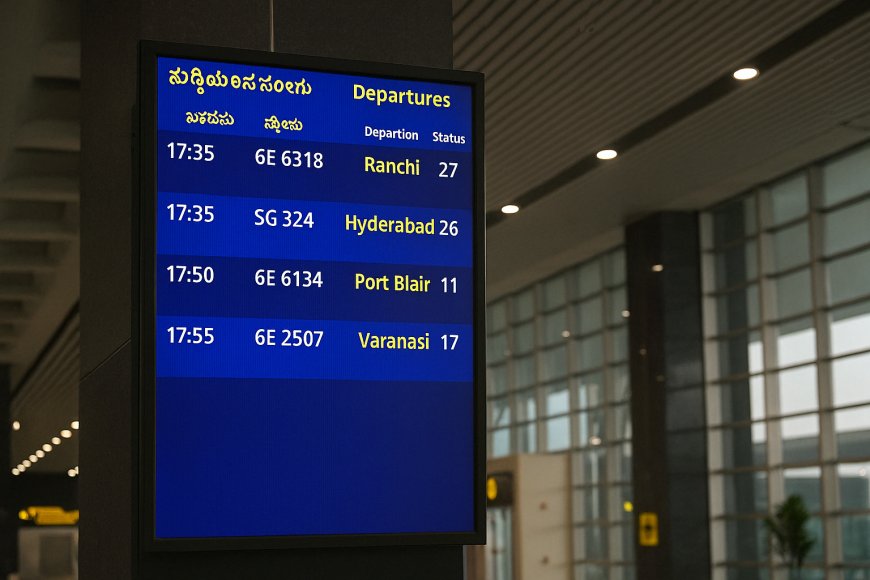Has Bengaluru Airport Really Removed Hindi From Display Boards?
Display Drama: Bengaluru Airport Sparks a New Language Debate

Bengaluru [India] April 14: A video clip went viral, showing display boards at Kempegowda International Airport using only Kannada and English. Hindi was missing. People began to ask—was this a silent move against Hindi? With rising debates between states and the Centre about language policies, this small screen became a huge talking point. Many Kannadigas saw it as a moment of pride, while others worried about language unity in public spaces.
What Exactly Was Seen on the Screens?
The video showed flight numbers, gates, and statuses on display—but only in two languages: Kannada and English. The absence of Hindi raised eyebrows, especially since airports usually use all three languages. People from across India were flying in and out, yet some passengers felt the change made travel less inclusive. It was not just about the board—it became a symbol of bigger language emotions.
Official Word Clears the Air
Bangalore International Airport Limited (BIAL) quickly stepped in. They said that nothing had changed. According to them, the digital boards always had Kannada and English for flight information. Hindi, they said, was still visible on other signages around the terminal. They stressed that the aim was to help passengers, not stir controversy. The statement cooled some tempers—but questions still remained.
A Quick Glimpse into the Past
Kempegowda International Airport, named after a local ruler and founder of Bengaluru, has always reflected Karnataka’s culture. Kannada being on display is not new—it’s a way to honour the roots of the city. Long before the internet outrage, the airport had Kannada as a key part of its visual identity. But with India’s mix of languages, striking the right balance continues to be tricky.
Bigger Battles Behind the Boards
This event is not just about an airport—it connects to a larger language debate. Tamil Nadu has also been vocal against the three-language policy in schools. They fear it might force Hindi on non-Hindi states. People are protective of their mother tongues. So even a display board at an airport can become part of a bigger cultural conversation. Language, here, is more than just words—it's emotion, identity, and history.

 Aryan K
Aryan K 





